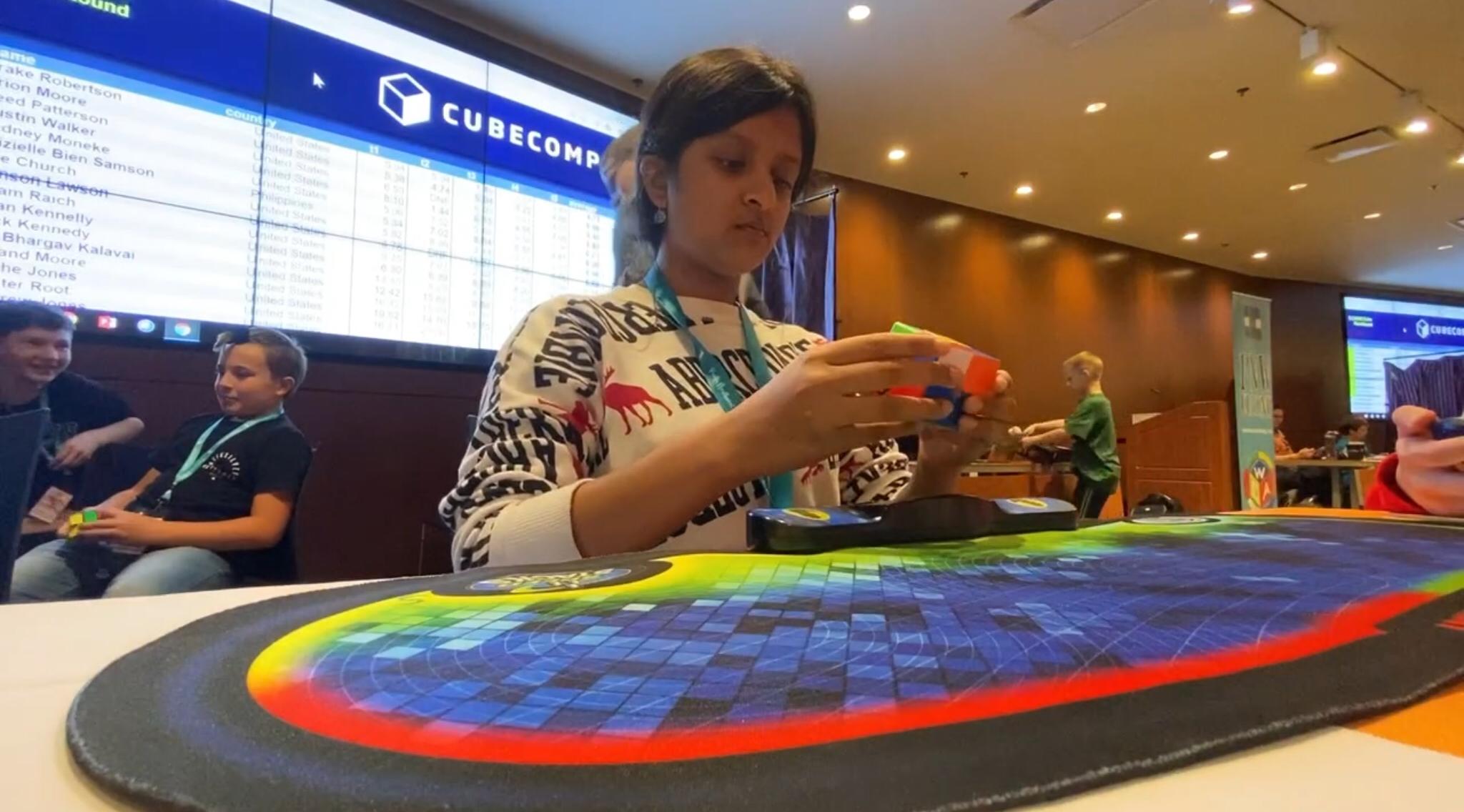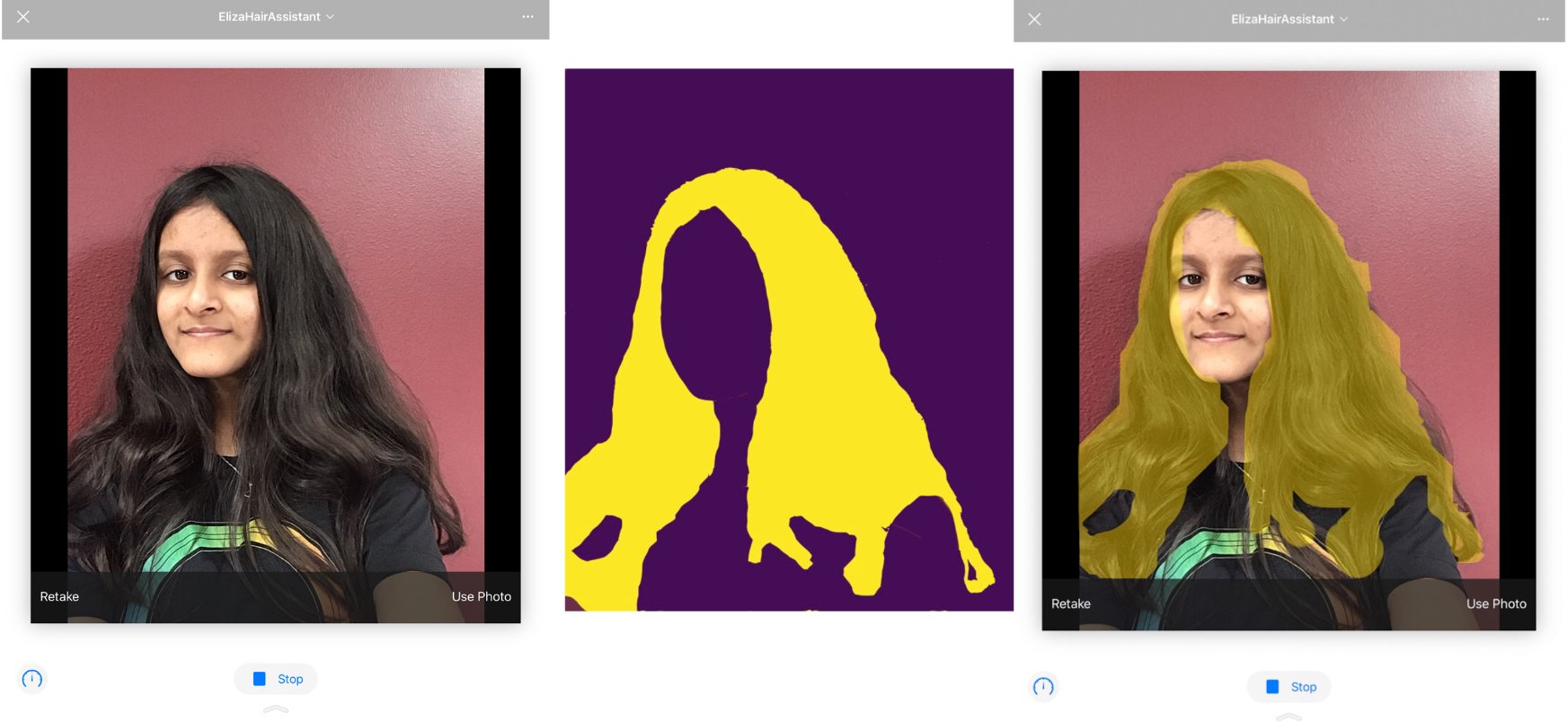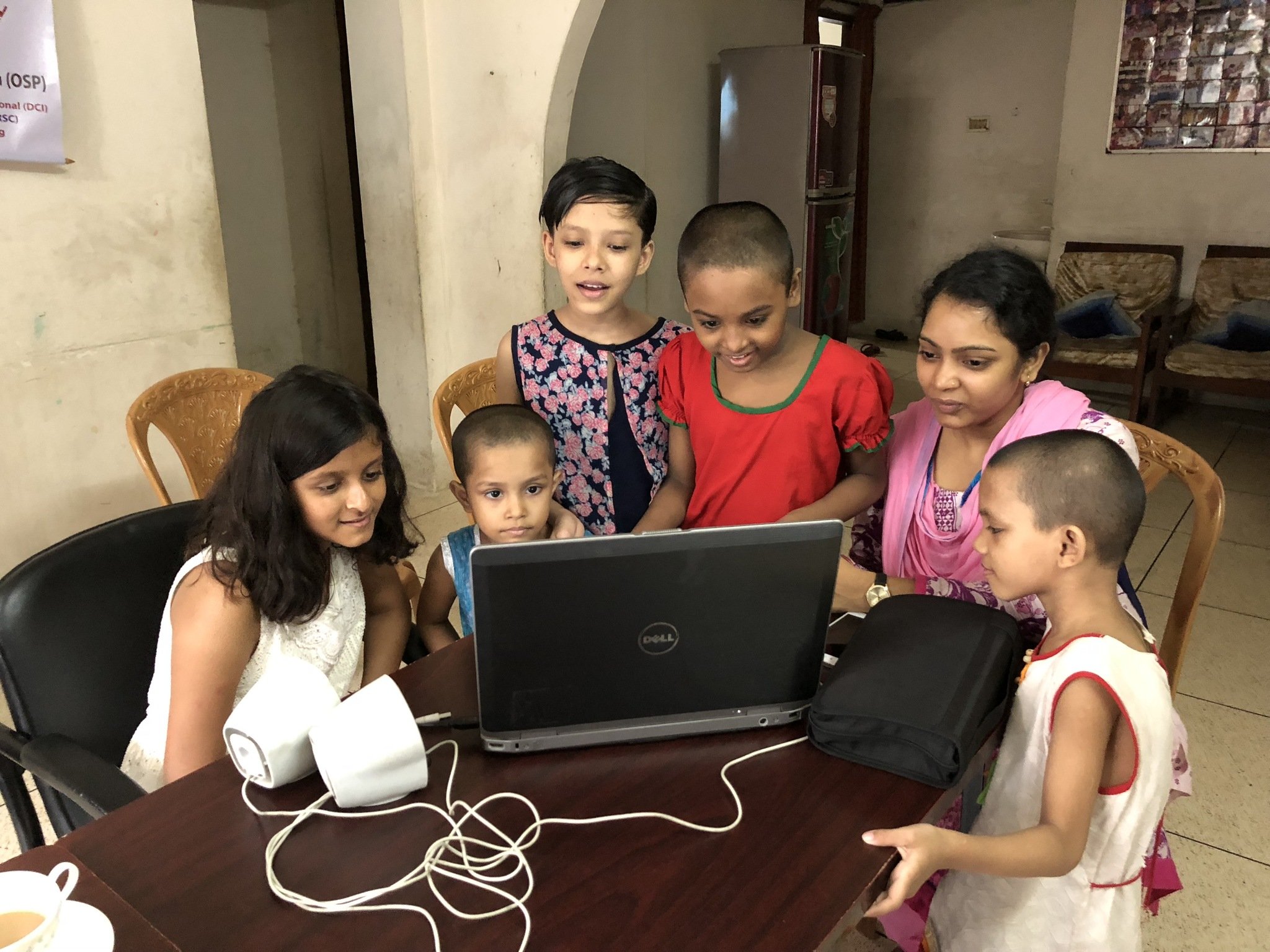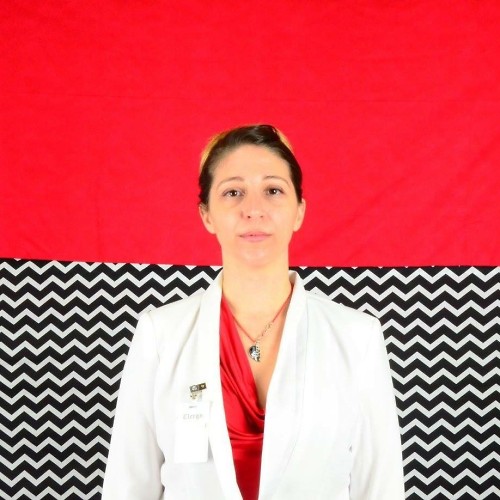
Ahead of this year's WWDC 2020, Apple held the first ever Swift Student Challenge, which asked kids and young adults to create a Swift playground on the topic of their choice. 350 applicants across 41 countries and regions won this honor and will be the only people to receive Apple's coveted WWDC 2020 jacket and pin collection.
Upcoming Ninth-grader Simmi Sen is one of this year's Swift Student Challenge winners. I had the pleasure of speaking with Simmi about her passion for coding, her life during the pandemic, and her incredible achievements in life so far.
First of all, tell me a little bit about your Swift Challenge entry. What did you do?

So for my Swift Challenge entry, basically what I entered was; during this quarantine, since I've been practicing socially distancing, I'm also thinking about, like, how I can improve my style and things like that. So I'm thinking about like what color hair I want to dye. And my friends are also thinking that. And we ask each other, "Oh, what color should we dye our hair?" And we don't really know. So since we aren't able to go to the hair salon, I decided to use my coding knowledge to create an app that; basically, you take a selfie, and then it would detect your hair and it will change your hair color to, like, a fun and bright color, and then you can see how you look. And if you like that color, you can go dye your hair. And if you don't, you don't have to. You can just see another color.
Before quarantine, one of my friends actually dyed her hair, and then she absolutely hated how it looks. So then she had to re-bleach and then dye it another color. And I just felt bad for her. So I wanted to create an app so you can see how you look.
Can I just tell you how much I identify with this? I usually have pink hair, but I haven't been able to go to the hair salon in more than three months. I know exactly how this feels. I love it.
What's the process like? With this Swift Challenge, how did you go about making it happen?
iMore offers spot-on advice and guidance from our team of experts, with decades of Apple device experience to lean on. Learn more with iMore!
I already had some programming knowledge prior to doing this with Swift Playground, but I have never actually made a Playground. There's actually a YouTube tutorial — I think there are like 10 parts. There's this teenager like me, and he made this whole tutorial on how to use Swift Playground. I started experimenting. So, I first watched YouTube tutorials on Swift Playground. And then after I did that, I wrote down all the steps on a piece of paper. There were some steps I didn't know, It's actually just a lot of Google and YouTube if you think about it.
Editor's note: This is the YouTuber Simmi is talking about (who, incidentally is also a Swift Student Challenge winner) - Anyone Can Code
Do you think it would be smart for Apple to have young people doing some of these how-to guides? Do you think that you identified with the YouTube creator because they were a teenager?
Definitely. The kid who was making the YouTube video actually explained it way better than maybe some older people. Because I think as a kid, he explained all the problems that I had. I also like that he was a kid my age. I think he was 14 or 15. I thought it was really cool that he's also into programming. So, yeah. I think, maybe in their tutorials Apple should use more kids. It would be awesome.
Was it easy to build this Swift Playground? Did you struggle?
I wouldn't say it was easy. It was pretty difficult. But I think the main thing I got out of it was the learning experience. I learned a lot about Swift. The day Apple announced the competition, I took some brainstorming ideas of what I wanted to do and I chose this one because I could relate to it most.
And then the next day, I just wrote down all the steps, like the pseudo-code — what I needed to do to solve the problem. Then I opened up Swift and I started experimenting with it. I'd say, I spent quite a few hours every da doing this project. Since school is not going on, I had more time to work on it.
You first got into coding when you were in the sixth grade. Can you talk a little bit about what sparked your interest?
I actually joined an FLL (First LEGO League) team. Basically, I went to a person's house who's dad was doing this FLL thing with a group of seven kids (we ended up all becoming really close friends and I still talk to them). In the FLL team, I built a robot and I designed the chassis. I learned how the different motors and gears work. But I wanted to know how to code because I thought that being able to control the robot was so cool.
But when I went to code the robot, it wasn't working exactly how I wanted it to. When you're building something, you know what you're doing since you can touch it. But when you're coding, you're not exactly sure how it will be. So when I was running the code, a lot of times instead of turning right, it would turn left and things like that.
I kept on trying. I watched more YouTube tutorials and I asked all my other teammates. And we were able to code the robot. And I got really interesting coding from there. And I actually ended up becoming the team leader for the robot and programming. I think that was really cool.
After our season was over, I did an M.I.T. programming course, where instead of dragging blocks, I would actually type in Python. I was still young, I was still in sixth grade, so I didn't really understand it too well. But I was still interested in coding. I have a robot at home that I was programming and practicing with. So I took another course by Stanford — that course is really good because they explained it much better. And I think I got more mature, too. I just could understand things better. That's how my coding journey really started.
You also spent a summer in Bangladesh teaching children how to speak English and use computers. Talk to me a little bit about this.

I got introduced to this Bangladesh program and DCI (Distressed Children International) because my of neighbor. She likes teaching me new things and reading books with me, and she also does a lot of volunteering. She introduced me to this place, this orphanage called Sun Child Home in Bangladesh. Basically, she goes there every year and she stays there for a month and teaches them English. She asked me to go with her. So I went.
It was really exciting. I helped her translate for the girls because I can speak Bangla. So I helped translate her English to Bangla so the girls could understand.
One day I was visiting the computer lab that they had and I left the door open and all the younger girls, they, like, ran into the room and they were touching everything and asking us if they could use the computers and things like that because they don't get to use it often.
So basically, the next day I did a computer class for them where I taught them how to put pictures and things like that on a presentation slide show. And they really enjoyed it. And I actually taught the older girls how to code using the dragging the blocks method.
I think something that's interesting about going to the Sun Child Home is that the girls, they would get really surprised by all these little things. For example, a mouse moving or how you type, which was really eye-opening for me.
Right. Because you come from always having computers in your life, so to see people who've never used a computer being surprised by it is a really different outlook.
Yeah. I still do a lot of work for DCI and I still communicate with the girls there.
Do you think you'll go back
Yeah, definitely. I'm hoping soon, maybe after this pandemic is over.
Talk to me about your Rubiks Cube skills.

I was bored at the beach one day, so I bought a Rubik's Cube. At first, I would only move it a little bit and then would put it back, but I would never actually scramble it. One day, I scrambled it and I just didn't like how it looked. So I watched a YouTube tutorial — and solving a Rubik's Cube was actually easier than I thought it was. So, I just watched the tutorial and solved it and didn't want to try to solve it again.
But then I saw all these other Cubers solving it super fast. So then I got inspired to solve the Cube. At first, I was averaging around one minute or 55 seconds. So then I decided to go to my first Rubik's Cube competition. And I averaged 55 seconds and I thought I was really good. But everyone else was averaging 15 seconds. So I ended up placing last.
But I learned a lot from going to that competition and I kept on going to competitions. So I now average around 10 seconds. I've been practicing a lot. That's my Rubik's Cube journey.
I've also created a Rubik's Cube Club because, at competitions, I've noticed that, out of the 120 competitors, I'm usually the only girl. I got a lot of girls to join. There are 20 people and I was able to teach 16 of them how to solve the Cube.
Are they fast, too? Or is it a little bit slower of a process for them?
Well, they all average under one minute. I think the fastest was able to average 30 seconds, which is, I think, pretty good.
Are you still programming regularly?
Yeah. I usually try to do it every day. I do a new assignment from these classes that I take every day. I also like watching random coding videos, too.
Are you planning on entering Apple's coding competition next year?
Yeah, I'm planning on doing that. I hadn't really thought about what I'm going to do for the next one, but I'm excited for it.
Do you think that you want to be a coder once you get out of school, like out of college maybe?
I'm not exactly sure what I want to be when I grow up. But given that I do a lot of programming — I also like drawing digitally with Adobe Photoshop — I know that coding will be a big part of it. It could definitely influence what I want to do. I feel like I'll use coding in whatever profession I choose since it's so helpful.
You like drawing with Adobe Photoshop? Do you consider yourself an artist or graphic designer?
I think I'm a graphic designer. I learned how to use Adobe Photoshop in sixth grade because I got a Wacom Tablet and started drawing with Photoshop (I learned how to use it watching YouTube). I actually create designs for T-shirts that I make and sell the T-shirts in a streetwear store in Portland.
Check out Simmi's graphic tees
Well, thank you so much for meeting with me. You've got so many things going on. I'm very impressed. It's really nice to meet you.**
Thank you.
Lory is a renaissance woman, writing news, reviews, and how-to guides for iMore. She also fancies herself a bit of a rock star in her town and spends too much time reading comic books. If she's not typing away at her keyboard, you can probably find her at Disneyland or watching Star Wars (or both).

